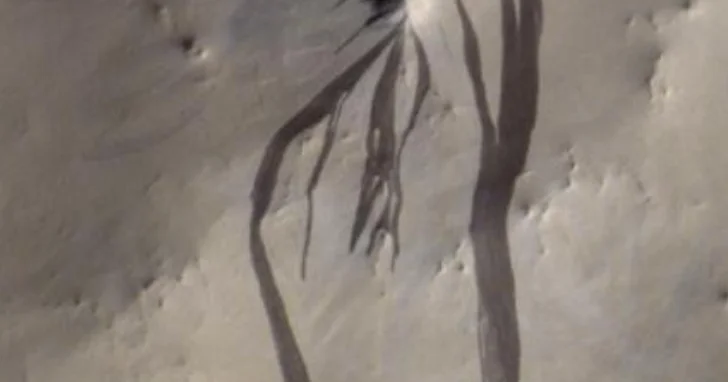
Mars’ Mysterious Slope Streaks: New Research Debunks Water Theory
For decades, the dark streaks adorning the slopes of Mars have tantalized scientists, sparking debate about the possibility of liquid water and habitable environments on the Red Planet. Are these enigmatic features, known as slope streaks and recurring slope lineae (RSL), evidence of a present-day Martian hydrological cycle? Or do they originate from dry processes like gravity separating dust and rock?
A groundbreaking new study, published in Nature Communications on May 19, 2025, casts significant doubt on the water theory. Researchers from Brown University and the University of Bern employed a sophisticated machine learning algorithm to catalog over 500,000 slope streaks in more than 86,000 high-resolution satellite images, creating the first global map of these features. This comprehensive analysis, lead by Dr. Adomas Valantinas and Dr. Valentin Bickel, revealed that slope streaks are more likely associated with wind speed and dust deposition, challenging the notion of a liquid or frost origin.

"A big focus of Mars research is understanding modern-day processes on Mars — including the possibility of liquid water on the surface," explained Dr. Valantinas. "Our study reviewed these features but found no evidence of water. Our model favors dry formation processes." The team's findings suggest that Martian slope streaks are more likely the result of dust avalanches triggered by wind or seismic activity, particularly near fresh impact craters.
CBS News reports that for now Ingenuity observations of land features now are believed to be dry, and not wet as scientists originally thought.
According to the research paper “Streaks on martian slopes are dry.”, “We identify three global-scale, statistically significant relations that support dry formation hypotheses for slope streaks: streak populations a) tend to be slightly closer located to new impacts than to the same number of randomly placed locations in some regions”. This means that if there is an area hit by a meteorite, an impact crater, it is more likely that these streaks may be related to that impact.
This new perspective has significant implications for future Mars exploration. By debunking the water theory, the study reduces concerns about contaminating potential habitable environments with Earth-borne microbes. NASA can now confidently explore slope streak sites without strict planetary protection measures, allowing for a more focused search for life elsewhere on the Red Planet. Dr. Bickel emphasized the power of this approach: "That's the advantage of this big data approach. It helps us to rule out some hypotheses from orbit before we send spacecraft to explore."
Key Takeaways:
- New study suggests Martian slope streaks are likely formed by dry processes, not liquid water.
- Machine learning analysis of over 500,000 slope streaks supports a wind and dust-driven origin.
- Findings reduce contamination concerns for future Mars missions.
- NASA and other space agencies can now explore slope streak sites with less restricted planetary protection protocols.
What are your thoughts on this new research? Does it change your perception of Mars' potential for harboring life? Share your opinions in the comments below!